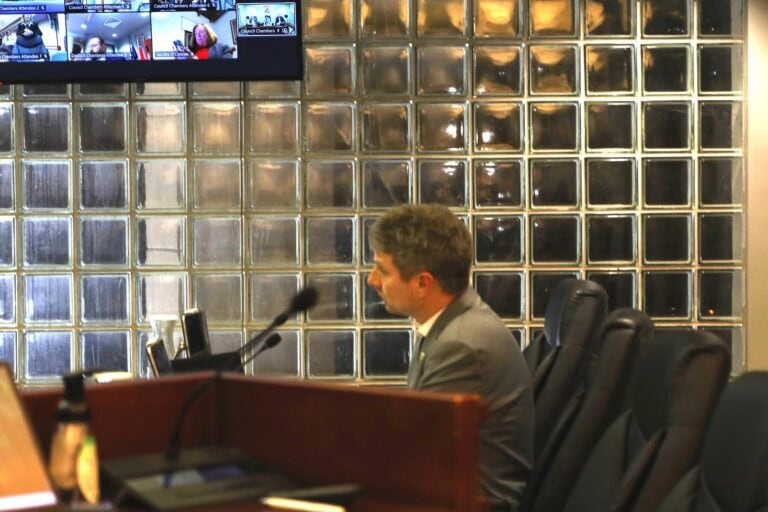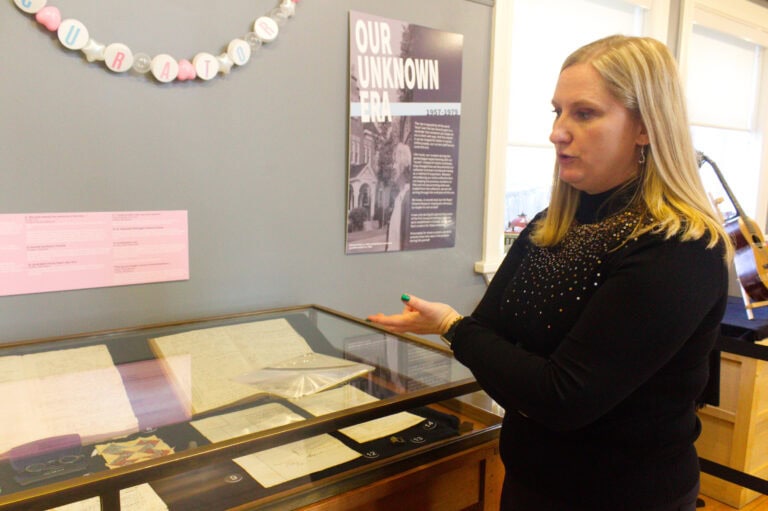After years of delays, the Niagara-on-the-Lake sewage treatment plant could finally be on the verge of working properly as regional staff say all problems should be rectified by the end of this month.
The $43.2-million facility, which originally was supposed to be operational about three years ago, has had several projected “ready” dates since then, but missed them all. In November 2014 the contractor received the “go-ahead” from the region to begin construction.
The delays could prove expensive for Varcon Construction Co. Ltd. Under its contract with the region, Varcon could forfeit anywhere from $1,000 to $3,000 for every day the project is late, said Niagara Region’s associate director of water and wastewater engineering Tony Cimino.
With the project three years overdue, that means the region could be holding back between $1 million and $3 million.
Cimino said he could not provide details on the exact amount of money held back as the region could be moving forward with litigation.
“We may be proceeding into litigation with some of the project stakeholders so I would not be permitted to provide it to you at this time,” he said in a statement to The Lake Report.
Regional officials say the new plant on Lakeshore Road has been operational since June 25 of this year, but the region still isn’t satisfied with some technical flaws in construction and won’t sign off on its completion by Varcon until all major problems are fixed.
The region’s associate director of wastewater operations, Doug Johnson, said he expects final problems will be cleared up soon.
The digester, the machine used to break down organic waste at the end of the treatment cycle, has been “one of the biggest issues” throughout the entire build of the plant, Johnson said.
“Getting it back up and running is our biggest concern,” he said.
Varcon has completed work on the digester and is now undergoing testing, he said. Barring any further complications the digester should be operational “soon,” Johnson said, though he said he doesn’t have an exact date the testing should be complete yet.
“Whether it will be up and running this week, I can’t say, but it’s close. We’re doing the commissioning and testing, and it’s close,” Johnson added.
“Right now, we’re filling it with water. We’ll feed it and when we’re sure we’re happy with it we’ll start putting sludge through it. We’ll start feeding the sludge into it slowly,” Johnson said.
Cimino said the plant has been accepting wastewater from the town since June and has been meeting all provincial compliance standards.
However, former NOTL town councillor Paolo Miele said he has been closely following the plant’s slow progress and said it is not operating as it should.
“I can tell you for certain that I’m involved still, and I’m keeping an eye on everything. It’s not accepting raw sewage – they’re trucking the sewage away,” Miele said.
Johnson said the plant is in fact accepting and treating all the town’s wastewater and sewage – it’s just the final step of the process, which breaks down the solid waste, that isn’t yet fully operational.
“Construction is done, deficincies have been looked at and we’re re-doing some testing, and hopefully we don’t run into anymore snags,” he said.
The undigested sludge is being transported to another plant until the NOTL facility’s digester is finished with testing and can be fully commissioned, Johnson confirmed.
“We are hauling all the sewage to the factory in Port Weller and running it through their system,” Johnson said. The Port Weller facility is a similar wastewater treatment plant owned by the region.
After being broken down at Port Weller, the solid waste is then sent to the Garner Road biosolids facility in Niagara Falls, which stores all the “digested sludge” from wastewater facilities across the region to be converted into soil fertilizers.
The new NOTL plant is “doing what it’s supposed to be doing. We just have an issue with the last piece of the treatment train,” Cimino said, adding that the treated water is testing cleaner than that of the old plant.
Problems over the last few years of construction included leaks in walls throughout the facility and misaligned pumps, he said, but the digester has been a main concern from the beginning.
Despite the constant delays, Cimino said the project is within its $43.2-million budget, though he added that it’s “tight” and the region won’t approve any more money for the project.
He said Varcon is accountable for “liquidated damages” as a result of the delays.
The liquidated damages clause in the contract between the region and Varcon penalizes the company “from about $1,000 to $3,000 a day for any delays past the date expected,” Cimino said.
Representatives of Varcon could not be reached for comment despite several attempts by The Lake Report, but a media announcement on the company’s website stated the project was expected to be complete by December 2016.
“We hold back the liquidated damages off every payment certificate. Every month’s payment we hold back some money matching the number of days the project has been delayed,” Cimino said.
“We’re virtually done – there’s no payment going out anymore. It’s just the deficiency work that (the contractors) are cleaning up.”
When the region is satisfied that the plant is in “perfect working order,” he said officials will sign off on the project’s completion. At that time, Varcon will be responsible for a one-year warranty, which Johnson said will cover “anything that breaks down electrically or mechanically.”
“They’re (the contractor) very eager for us to take over the plant,” Cimino said.
When a reporter toured the plant with Cimino on Monday of this week, there were few workers on site except for the person who oversees operations to ensure everything continues to run smoothly. Once the facility is running, Johnson said there will typically be one systems operator on-site during the day, plus dedicated maintenance staff.
“When operation staff are not on-site the plant will be monitored by the operations staff at the Port Weller plant as we do now with the lagoon plant,” Johnson said.
At this time, Cimino said, the effluent water, or treated water, is being run through the lagoon system of the old plant, which is located nearby. The water is treated through the new plant and being run through the old plant as “backup.” It will soon be redirected to the new outfall to the lake.
“It’s just a way for us to control it while the plant is getting online in case something was to go wrong while we were constructing. If it wasn’t operating properly, we always had the lagoon as a safeguard, and we could have it go through the lagoons for treatment,” Cimino said.
“That concern is now gone.”
Johnson said a traditional lagoon system usually has two ponds. The sewage comes into one pond and is broken down by germs in the lagoon.
The sun and wind provide light, warmth and oxygen to the water to help grow bacteria and algae, which breaks down the sewage, cleaning the water. The clean water overflows into the second lagoon.
“They’re just working like a digester would. The solids settle and then it moves over to the next pond,” he said.
Now, the treated water runs through the second pond to the lake, but that will soon be bypassed and the lagoons will be decommissioned, he said.
Lord Mayor Betty Disero said her main concern is that the plant must be fully operational before the old one is decommissioned.
“My point is – it’s got to work or fix it before you open it. That way our residents won’t have to deal with a broken treatment plant. They’re working on it. As long as everybody’s toilets continue to flush – I’m happy,” she said.



.jpg)







